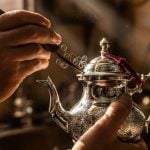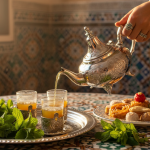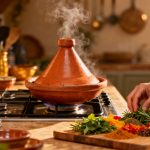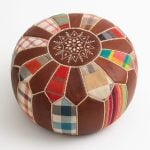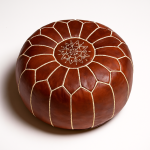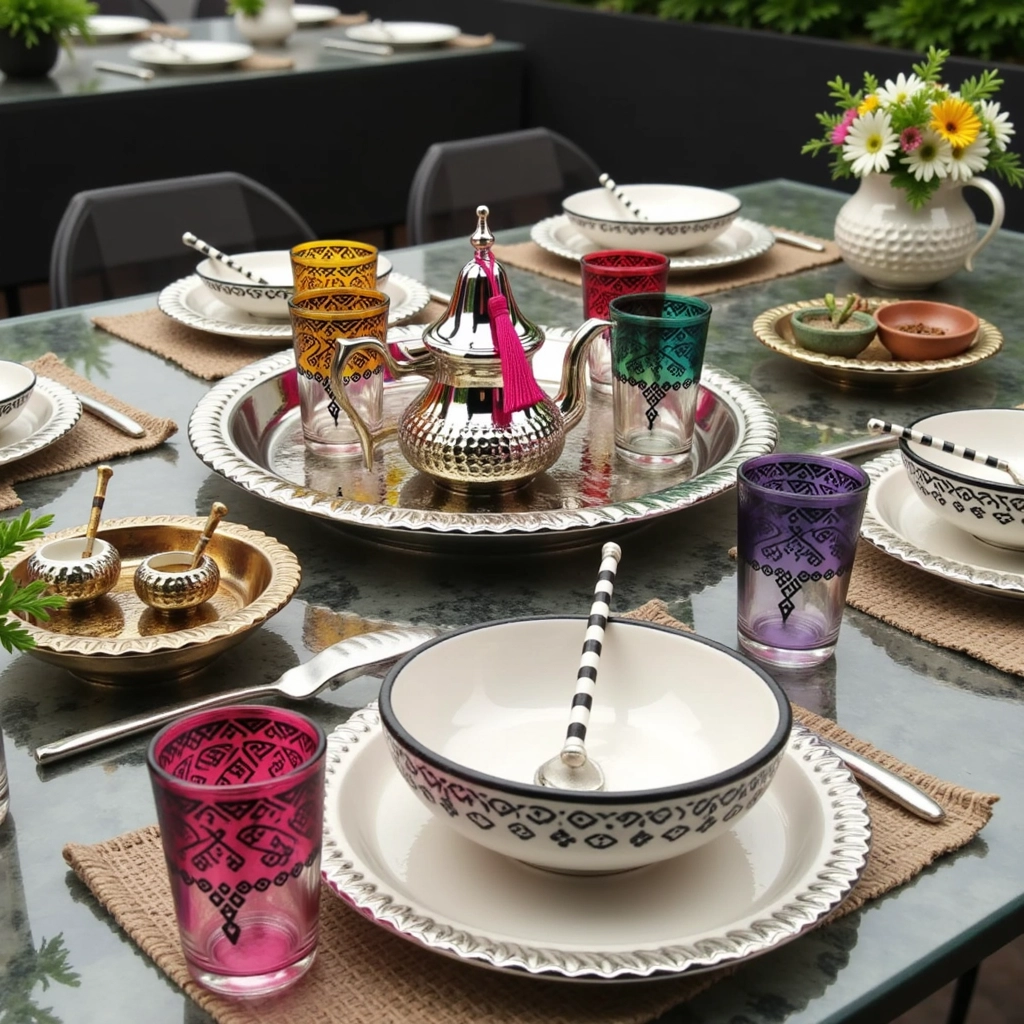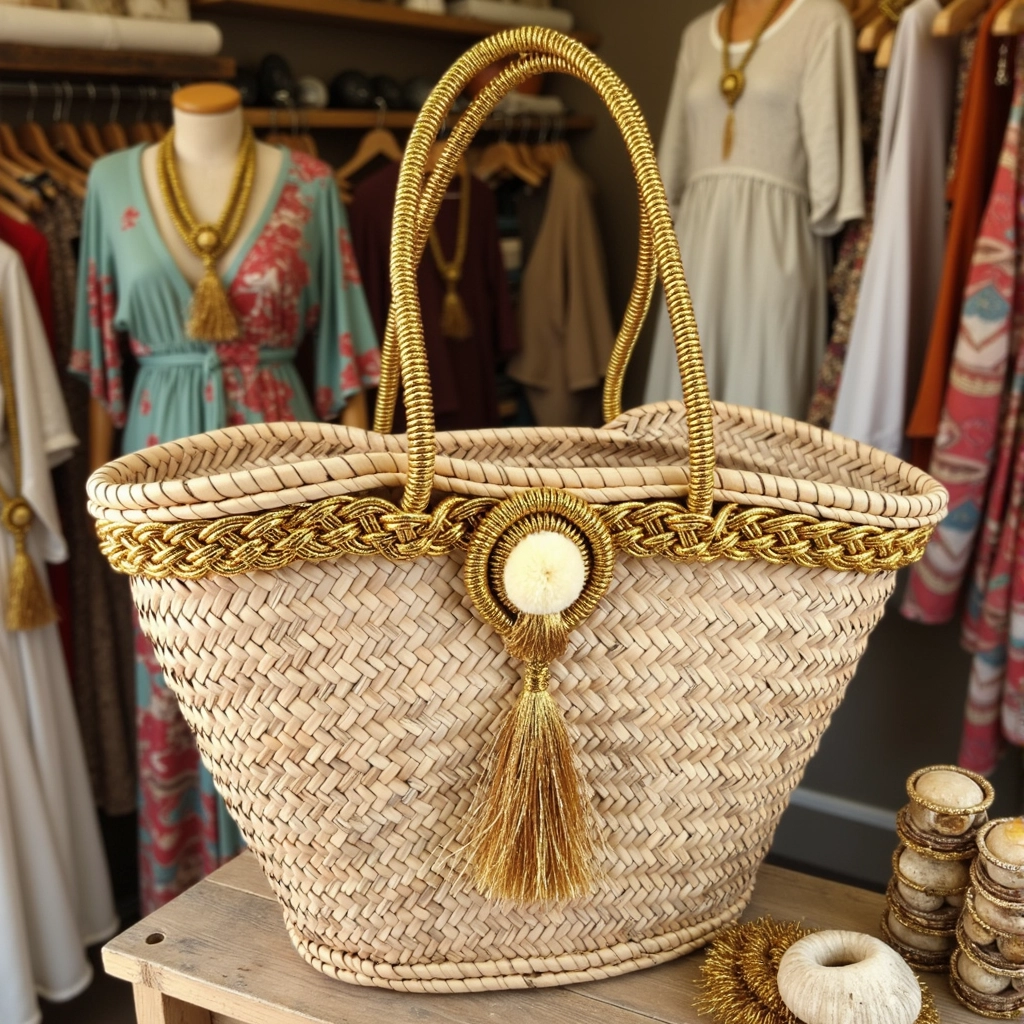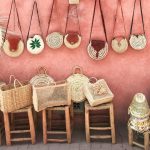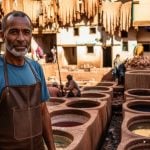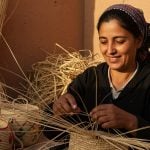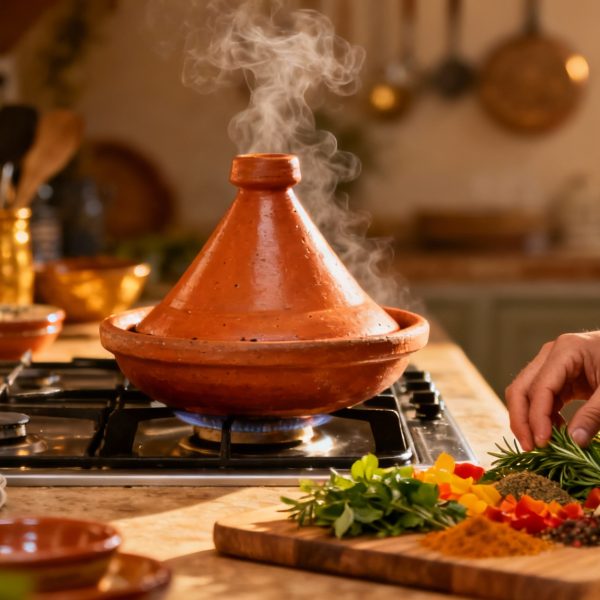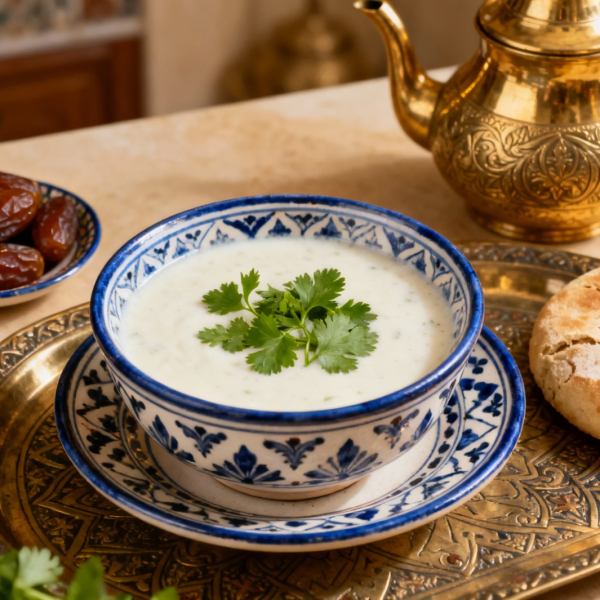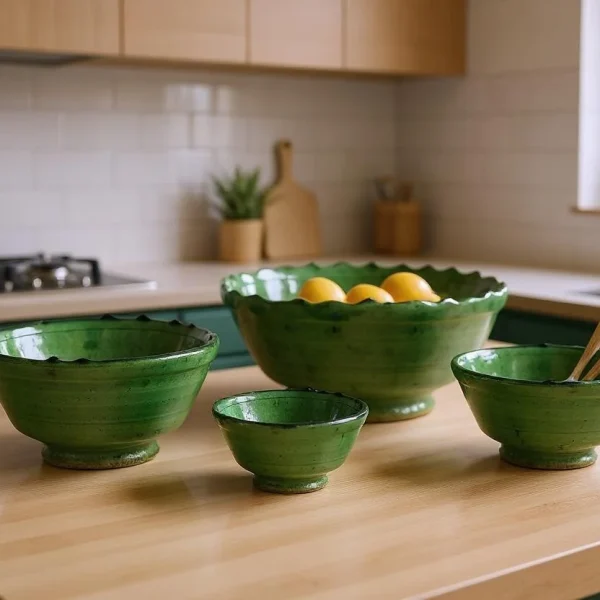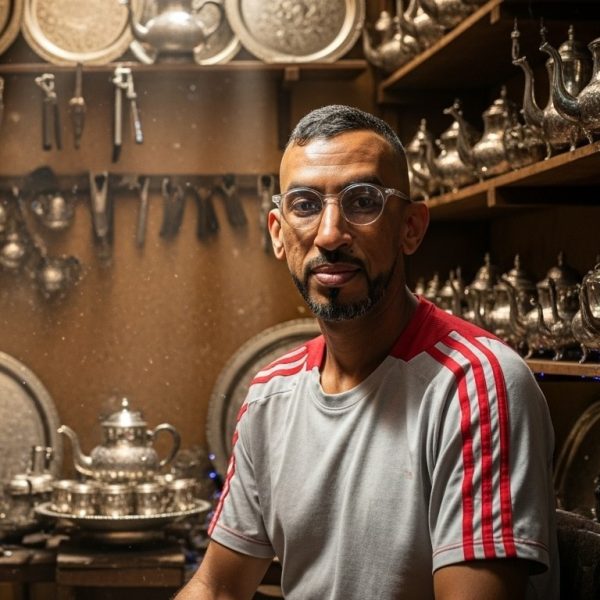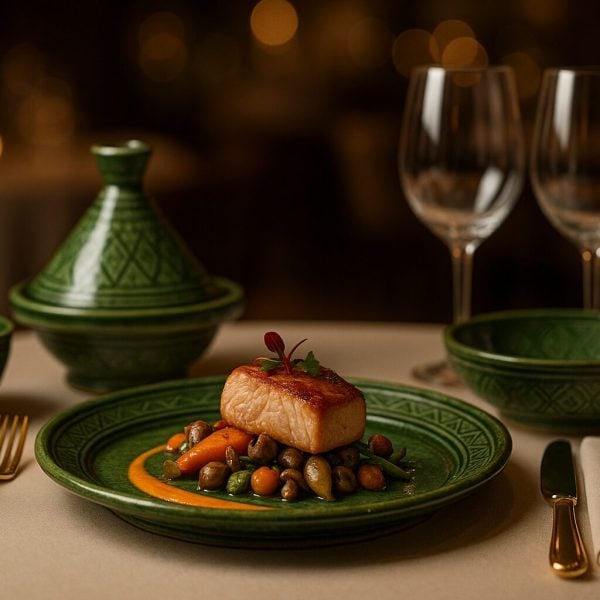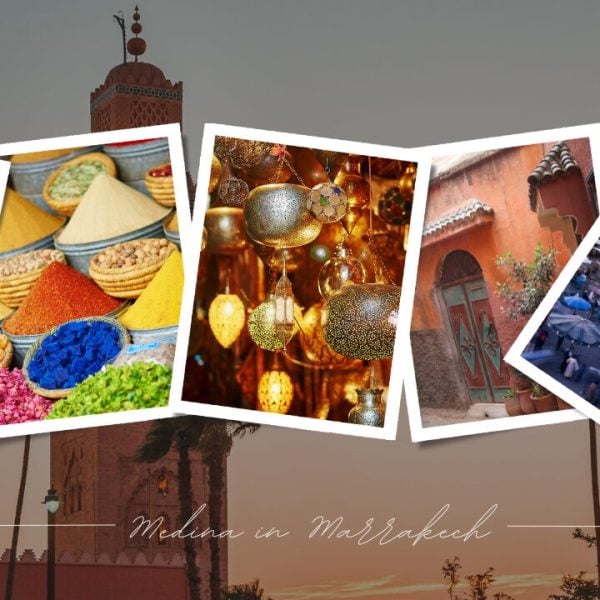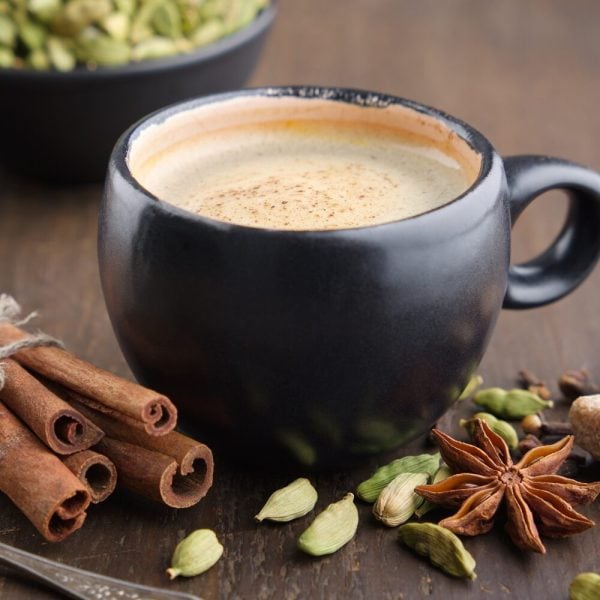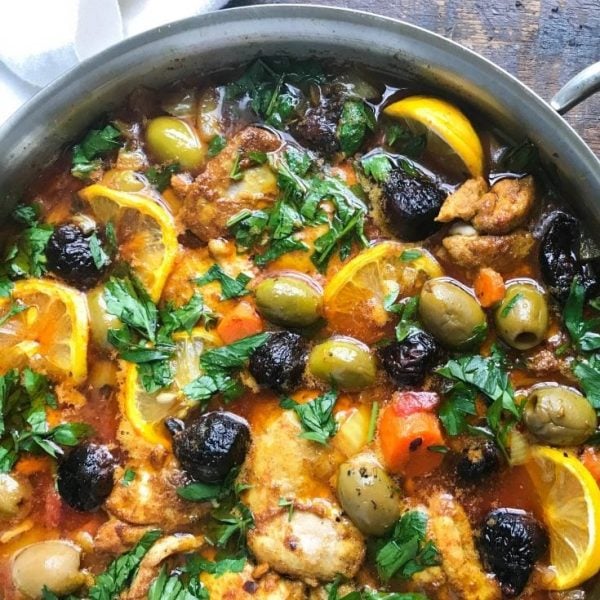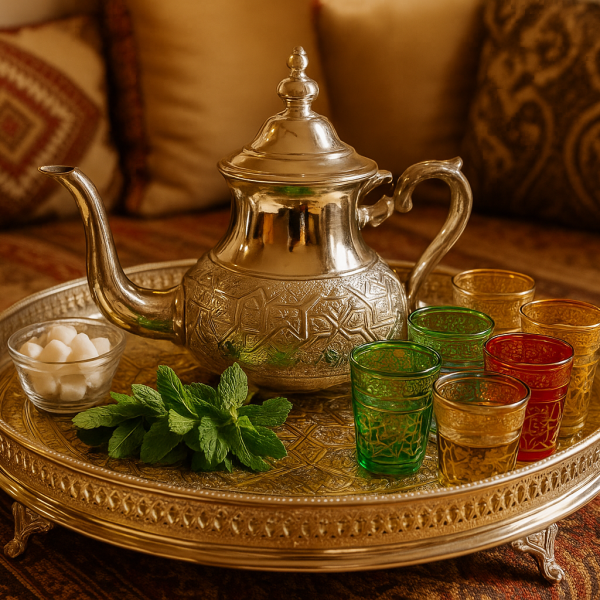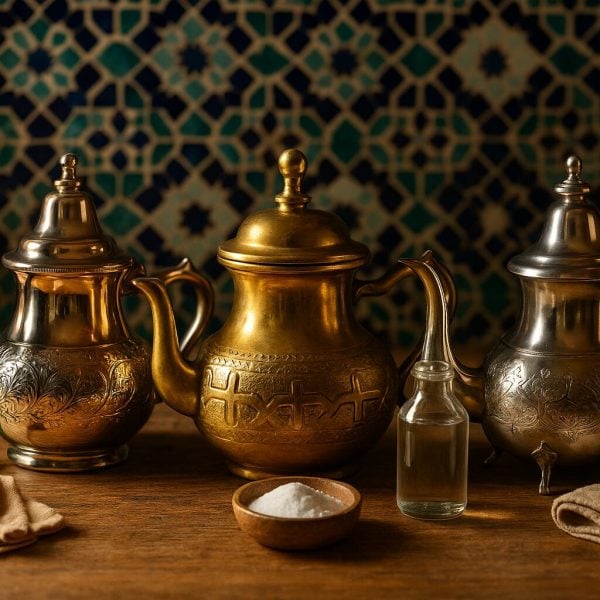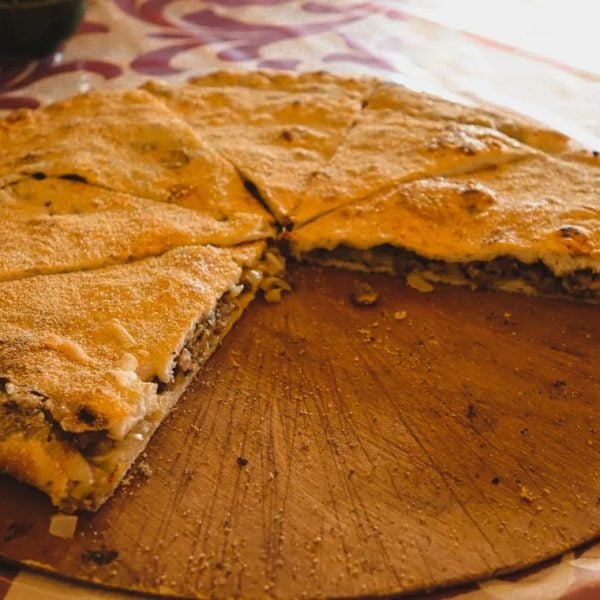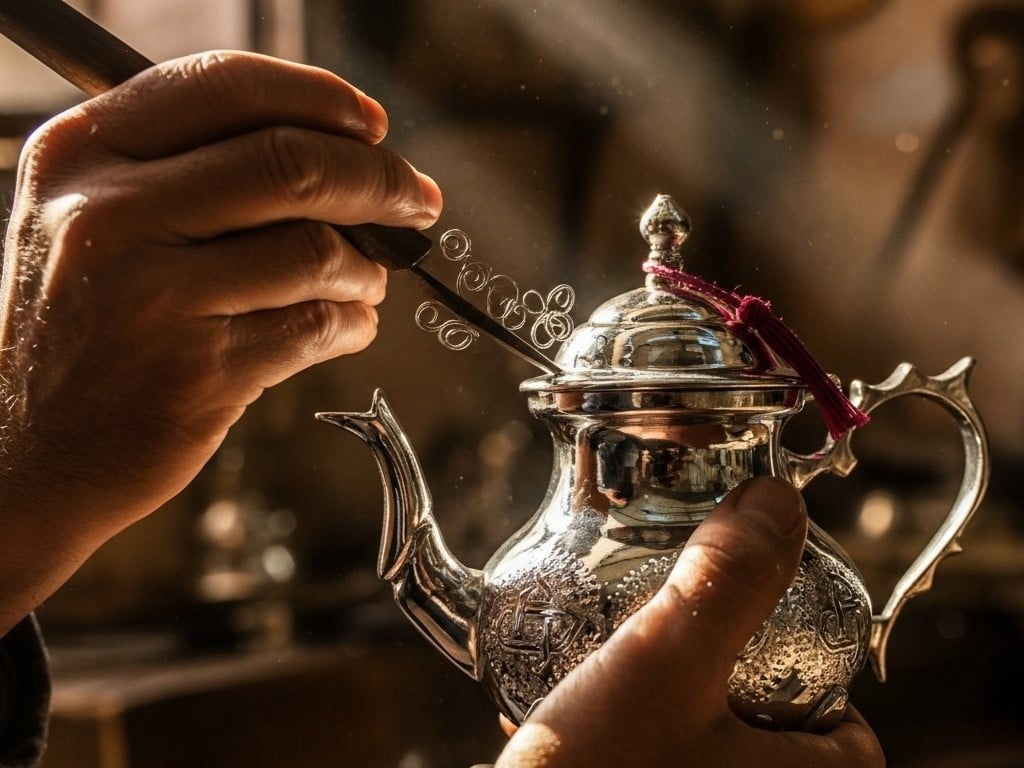
Step into the winding alleys of the Marrakech medina, away from the main square, and you’ll hear it. It’s a sound that seems to rise from the city’s red earth: the rhythmic, percussive song of the metalworking souk. It’s the tap-tap-tap of a hammer on brass, a focused, precise scratch of a steel tool on silver. This is not just noise; it’s the sound of heritage being forged.
This is the sound of the Maalem, or Master Artisan, the heart and soul of Marrakeche Crafts.
For many, a Moroccan lamp or silver teapot is a beautiful object. For the interior designers we work with, it’s an authentic statement piece. For the thoughtful gift-buyer, it’s a present with a human story.
Our mission is to share that story. We want to take you beyond the finished product and into the workshop, to introduce the hands and ancestral techniques behind the piece you will cherish. This is a guide to the soul of the craft.
The Masters of the Medina: Meet Your Artisans
Our “rustic and authentic” promise isn’t a marketing term; it’s a personal relationship. We partner directly with master artisans, ensuring their skill is honored, their families are supported, and their endangered techniques are preserved. You can meet all the artisans in our collective on our blog. For this guide, we want to introduce you to the two masters of our metalwork collections.
Abdul Jalil: The Master of Light
We are honored to partner with Abdul Jalil, a Master of Light who transforms raw brass into poetry. For Abdul, this is more than a job; it is a legacy. With the income from his craft, he supports his family and funds the training of two apprentices, passing his knowledge to the next generation.
Abdul is a master of three core techniques: the dinanderie (hammering) to shape the form, the serrouj (piercing) to create light, and the naqsh (engraving) to add intricate detail.
Kamal: The Master of the Table
In his bustling workshop that employs 14 people, Kamal, a master of silver-plated crafts, upholds a 25-year family tradition. Kamal is a master of decorative hammering and naqsh (hand-engraving)—a dual-skill process that creates our signature, textured tea sets.
His work is a study in patience. The intricate hand-engraving on a single teapot can take one of his masters 10 to 12 hours to complete, a testament to a dedication that is almost impossible to find in a mass-produced world.
A Glossary of Techniques, Part 1: The Magic of Light (Abdul’s Craft)
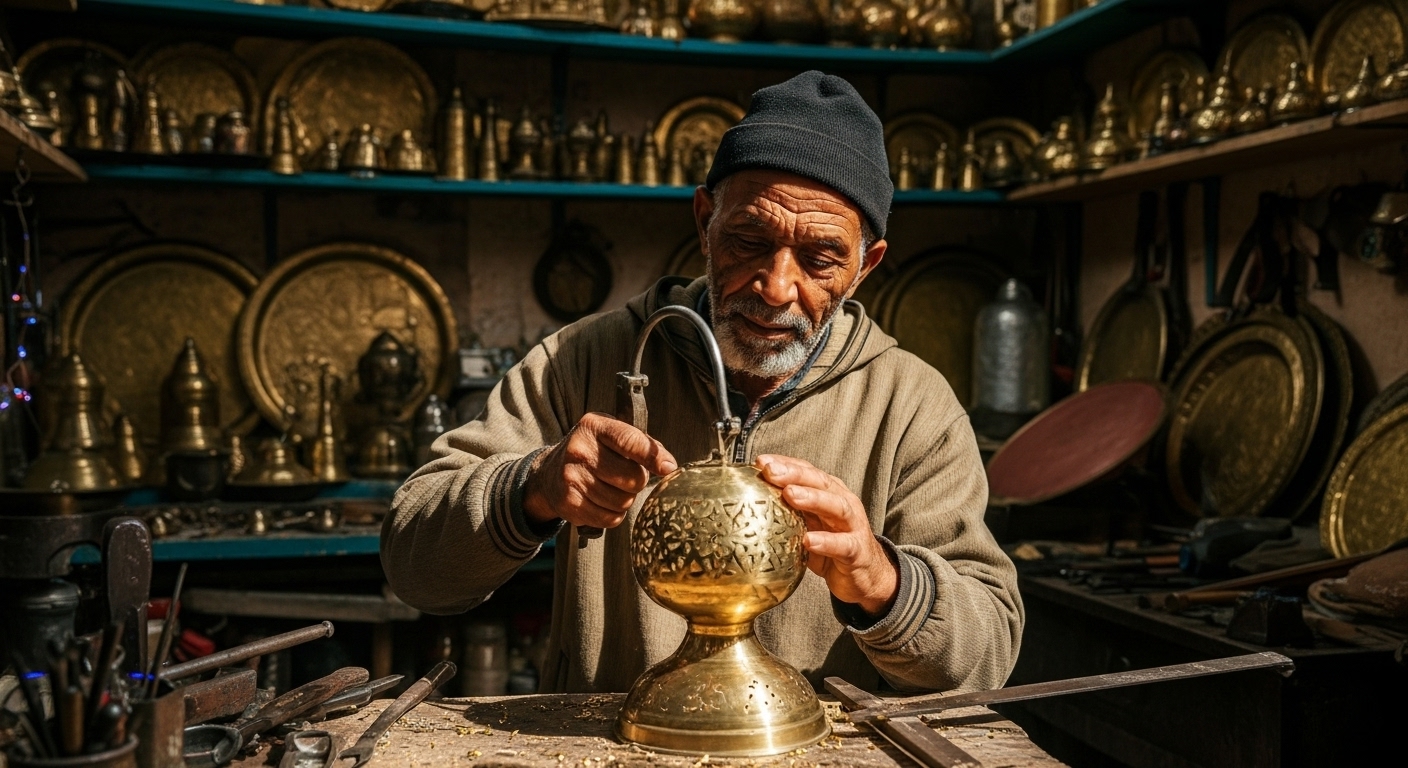
A genuine Moroccan lamp is not just a light fixture; it’s an interactive piece of art that paints a room with shadows. This magic is created by Abdul’s hands, using a trio of ancient skills.
Technique 1: Dinanderie (Hammering) – Shaping the Form
It all begins with a flat, raw sheet of brass. The dinanderie technique is the foundational art of shaping this metal into the three-dimensional, curved forms of your lamps using nothing but a hammer, an anvil, and incredible skill. This is Abdul’s first step, and it’s what gives each lamp its unique, hand-hammered character.
Technique 2: Serrouj (Piercing) – Carving with Light
This is the most dramatic and defining of Abdul Jalil’s techniques. This is not simple hole-punching. Serrouj is the meticulous art of using a fine-bladed hand saw to individually cut intricate, flowing patterns directly from the shaped brass. Every line and curve is cut by hand.
The Effect: This process creates the crisp, graphic, and ethereal shadows that make your lamps true statement pieces, turning an entire room into a canvas.
Technique 3: Naqsh (Engraving) – The Final Flourish
This is the final layer of mastery. After the lamp is shaped and pierced, Abdul Jalil often adds a final layer of hand-engraved detail (naqsh). Using a small steel tool, he adds delicate floral or geometric motifs that add a level of complexity and texture that can only be achieved by hand.
To maintain the warm glow of this hand-worked metal, see our guide on How to Clean and Polish Brass.
Find the centerpiece for your next project in our Moroccan Brass Lamp Collection.
A Glossary of Techniques, Part 2: The Art of the Table (Kamal’s Craft)
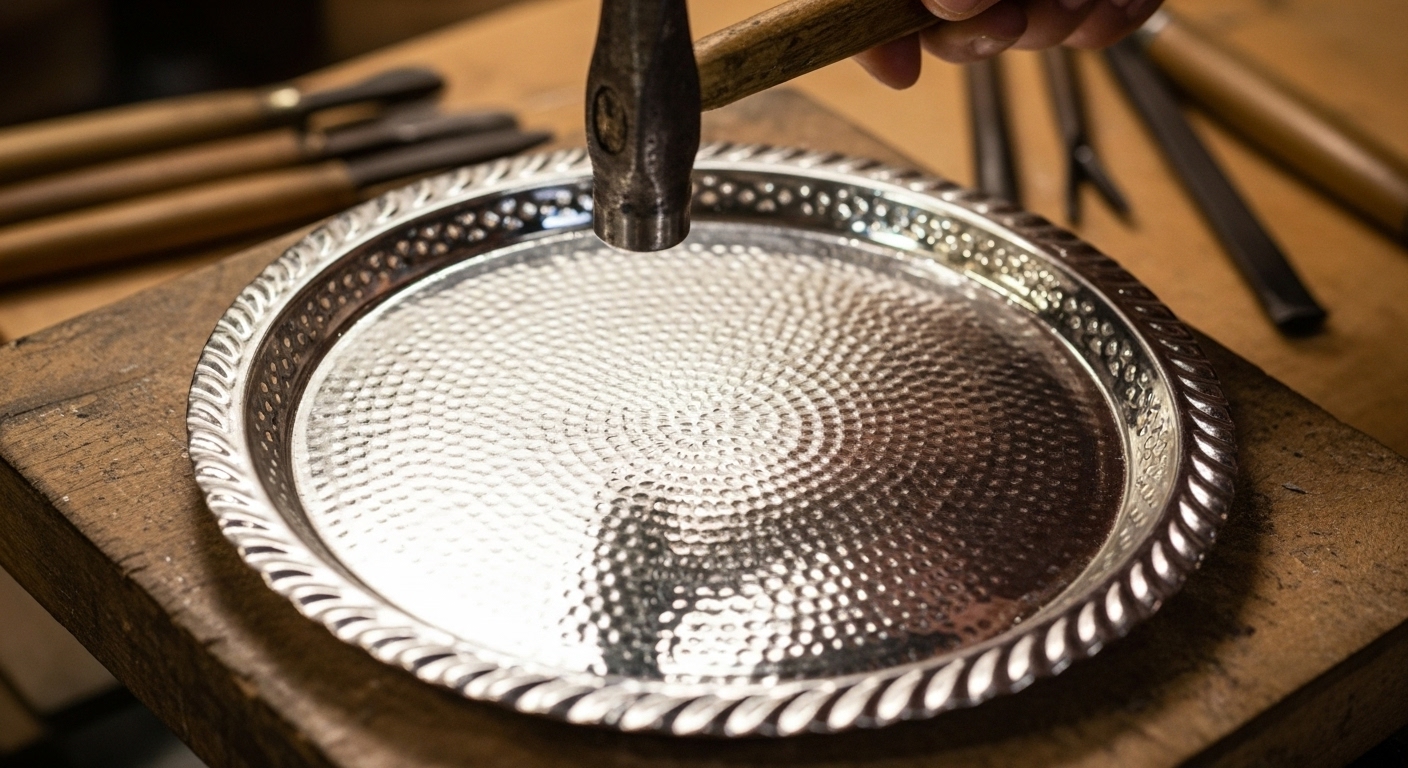
The Moroccan tea ceremony is a ritual of hospitality, and the tools of this ritual—the teapot and tray—are works of art. Kamal’s workshop specializes in a dual-technique process that gives these pieces their unique soul.
Technique 4: Decorative Hammering – Creating Texture
This is where Kamal’s art begins. Before engraving, his masters use fine-pointed hammers not just to shape the brass base, but to create intricate, sparkling decorative patterns. This is what gives the piece its deep, rustic texture and creates a surface that plays beautifully with the light, even before it’s silver-plated.
Technique 5: Naqsh (Engraving) – Drawing with Steel
This is Kamal’s 10-hour specialty. After the piece is shaped, hammered, and silver-plated, the masters begin the naqsh. With a steady hand, they hand-carve intricate geometric and floral patterns into the surface. The combination of these two techniques—the deep-hammered texture and the precise engraved line—is the ultimate sign of quality and craftsmanship.
These pieces are the heart of the Moroccan tea ceremony, a tradition with a rich cultural history and significance. This level of craftsmanship is why they make such meaningful presents.
From the traditional Moroccan teapot (which we teach you how to clean here) to the intricate serving trays, each piece tells a story.
Explore the artistry in our complete Moroccan Tea Sets collection, or find the perfect present in our Best Moroccan Tea Set Gifts Guide.
A Glossary of Techniques, Part 3: The Language of Adornment
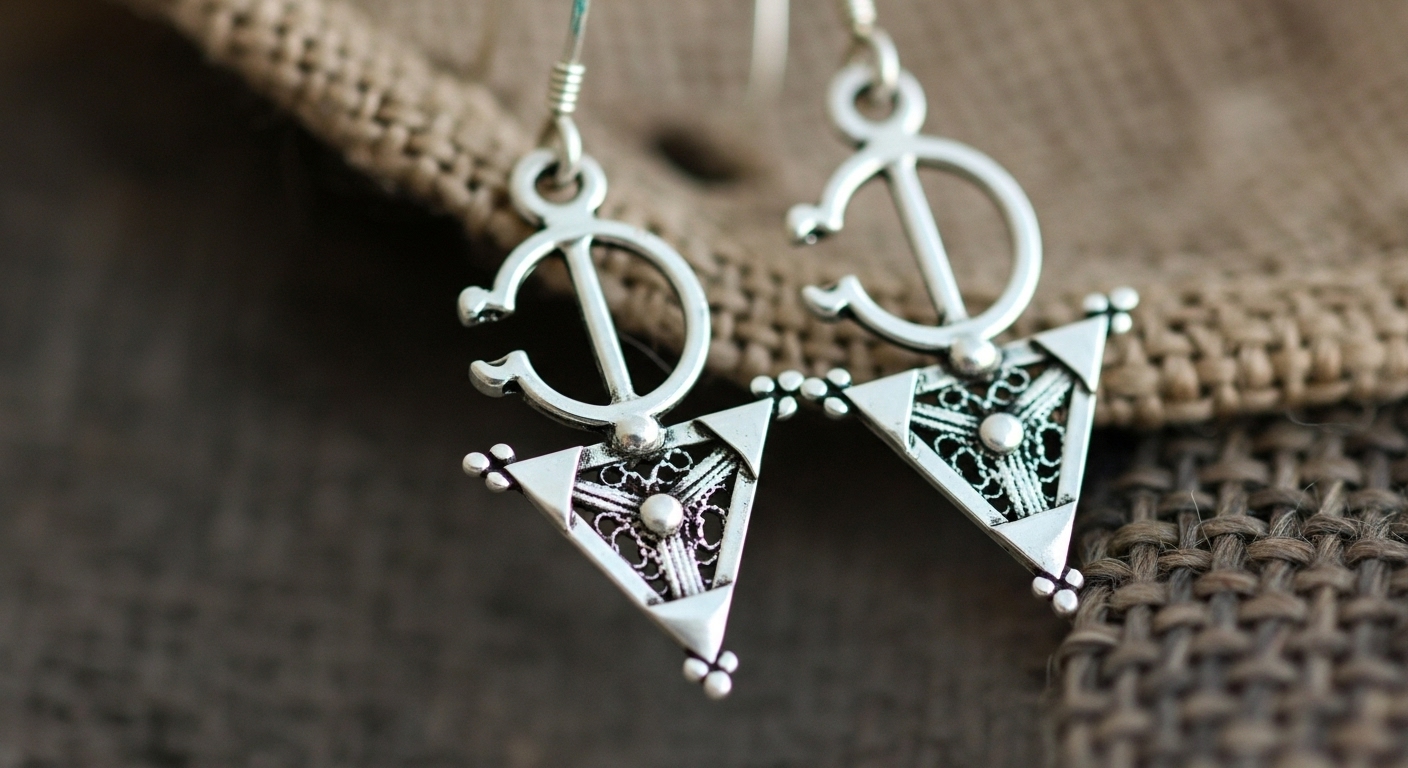
Technique 6: Filigree & Casting – The Berber Tradition
Found in our Moroccan Jewelry Collection, these ancient techniques speak a language of their own. Filigree is the delicate art of twisting and soldering fine threads of silver into lace-like patterns. This is often combined with casting and engraving to create traditional Berber (Amazigh) designs, such as the Hamsa or triangular fibula, which are worn as talismans of protection and identity.
A Promise in Every Piece: Why “Handmade” Matters
When you understand the hours, the skill, and the heritage woven into each of these techniques, the object is transformed. It is no longer just a “product”—it is a piece of a person.
A purchase from Marrakeche Crafts is an investment in a human being. It’s the salary for Kamal’s apprentices, ensuring the art of naqsh is not lost. It’s the preservation of Abdul’s mastery of the serrouj technique, protecting an endangered art form. It’s our promise that the soul of the Maalem will continue to light up our homes and grace our tables for generations to come.
Find the authentic, story-rich statement piece for your next project in our
Artisanal Lighting Collection..Common Questions About Moroccan Metalwork
A: Absolutely. Our teapots are handcrafted for the traditional Moroccan tea ceremony and are designed for serving hot tea. The silver plating is stable and, like all our crafts, is made with non-toxic, food-safe materials. We even have a guide on how to clean your teapot to ensure it lasts a lifetime.
A: This is the most important sign of quality. “Punched” lamps are made by simply punching holes in thin metal. Our “hand-pierced” (serrouj) lamps, crafted by masters like Abdul Jalil, involve a saw being used to cut intricate patterns out of thick, solid brass. The serrouj technique is far more difficult, time-consuming, and results in the crisp, art-like shadows you see from our brass lamp collection.
A: Yes, any item with genuine silver will naturally tarnish over time when exposed to air, which is a sign of its authenticity. Many people love the rustic, warm patina this creates. However, it is very easy to restore its original brilliance. We have a simple guide on how to clean and polish brass (the same method applies to our silver-plated items).
A: Buying from a Maalem (Master Artisan) like Kamal or Abdul Jalil ensures that the artisan receives a fair, dignified wage for their incredible skill. It funds apprenticeships, supports families, and keeps endangered techniques alive. When you buy from a source that isn’t transparent, the artisan often receives only a tiny fraction of the final price, and the craft itself suffers.
